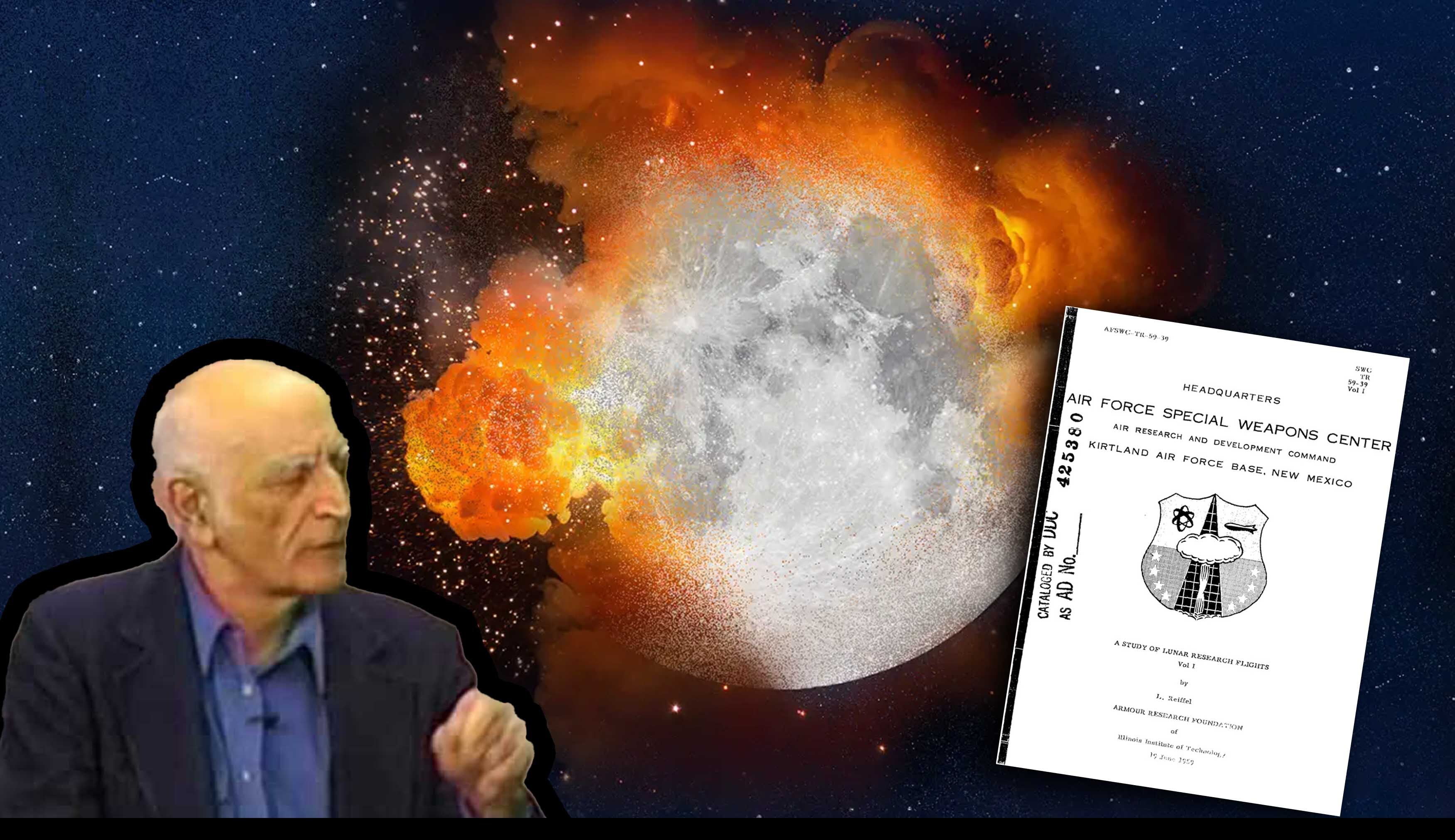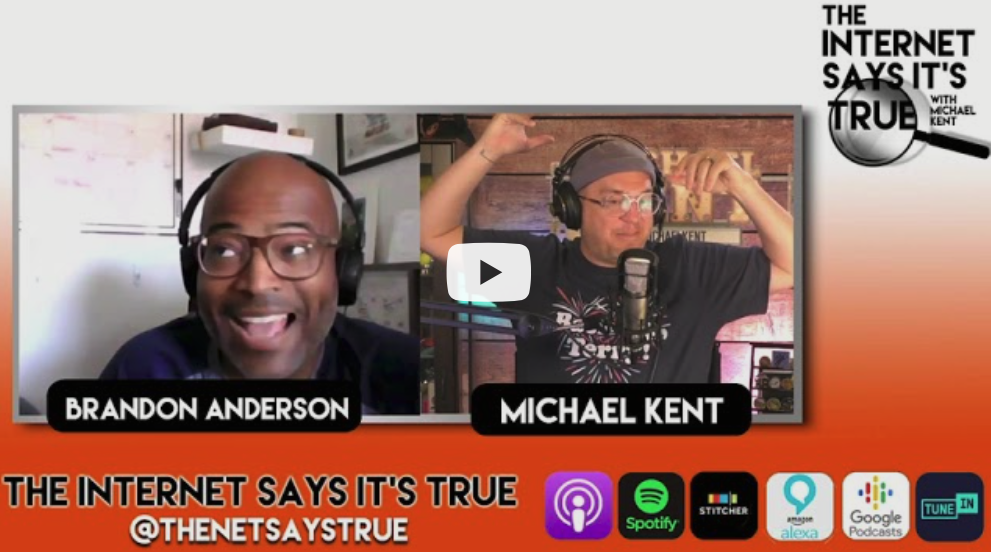The Plan to Blow Up the Moon
Alexander Abian was a brilliant math professor at Iowa State University. But he had one crazy idea: that all of the problems of the world could be solved by DESTROYING THE MOON. In this episode, we talk about Abian’s plan in detail, why it wouldn’t work, and then discuss a secret government project to actually nuke the moon! We are joined by Brandon Anderson to play the qiuz game!

Alexander Abian was a brilliant mathematician. He published 3 books and over 200 scientific papers. As an Iranian immigrant, he taught for over 25 years at Iowa State University. He had an undergraduate degree from Iran and a PhD from the University of Cincinnati. And in the field of mathematics, he was very well respected and accomplished. But he had this crazy idea. We should blow up the moon.
No really. He wanted to get rid of the moon altogether. The moon’s gravity pulls at the Earth, causing tides in the oceans. It also greatly influences weather patterns in the world. So Abian – this otherwise really smart mathematician, had this theory that if we just got rid of the moon, we could eliminate heat storms, hurricanes, snowstorms and seasons in general because getting rid of the moon would mean the Earth wouldn’t wobble on its axis. He said “Those who dismiss Abian’s ideas are very close to those who dismissed Galileo.”
He was spreading these ideas starting in 1991 through usenet groups and later in an Iowa State newspaper. Because it was such a bizarre idea and because he had so thoroughly and with such conviction tried to prove his theory, newspapers all over the world started printing stories about Alexander Abian’s plan to destroy the moon. His plan was to drill a giant hole in the moon, fill it with a nuclear explosive and detonate it remotely from Earth. Abian said “I am raising the petulant finger of defiance to the solar organization for the first time in 5 billion years.”
Immediately, almost everyone who studied Astronomy and Meteorology said that this would be a horrible, horrible idea. Before we talk about why – let’s first discuss the fact that if we harnessed all of the most powerful nuclear weapons possessed by civilization combined, we wouldn’t have enough to blow up the moon. Not even close. It would take a giant astronomical collision to destroy the moon, similar to the one that likely created the moon in the first place.
But then we get into what it would do to the Earth. If – by some miracle, the moon was able to be blown up, it would break into giant pieces and where would those pieces go? NASA was quick to point out that the Earth couldn’t survive this level of debris. They’d go hurling toward the Earth at species-ruining speeds. Just the gravity on a giant piece of moon falling into our atmosphere would heat the Earth so much that it would be unsurvivable to everything and everyone. Even without that fact – like if you could wave a magic wand and make the moon disappear, there would be trouble. The gravitational relationship between the earth and moon stabilizes the Earth’s rotation and without it, there would be massive Earthquakes throughout the planet. Instead of getting rid of tides, tides would be huge and unpredictable and would destroy continents. One Astronomy Professor, David Taylor at Northwestern University said “We’d destroy civilization, but we’d have great weather.”
So when Abian died in 1999, his theory of solving all the world’s problems by blowing up the moon died with him.
But when I was learning about Alexander Abian, I learned of another plan to nuke the moon. It was called Project A119. And it was planned to be carried out by none other than the United States Air Force.
In October of 1957, Sputnik scared the crap out of America. America had seen itself as technologically advanced after World War II and was starting to learn that there were certain areas where The Soviet Union was catching up. The Soviet Union had previously been seen as technologically primitive, but the U.S.S.R. put their foot on the gas when it came to educating and training scientists. They were creating two to three times as many scientists per year as the U.S. and all of this came to a head when Sputnik 1 was launched. The Soviet Union was the first to send a man made object into orbit around the Earth.
Now the Sputnik satellite itself wasn’t anything super technologically advanced. It was a 23” sphere of aluminum that did nothing but broadcast a radio beep. But the way they got it into space was pretty frightening. If The Soviets could put a satellite on a rocket and send it into space and into a low Earth orbit, they could put a nuclear warhead on a rocket and send it anywhere in the world. That was the fear. With the Sputnik 1 and the R-7 Semyorka ICBM that launched it, the world got a lot smaller. And that was terrifying.
The United States scrambled to get a satellite into space. It’s not that they hadn’t already been trying. Project Vanguard was the US’s attempt at launching a Satellite into orbit, and it would have beat the Russians’ attempt by a month if they hadn’t been faced with a laundry list of issues and delays. Two months after Sputnik, the first Vanguard attempt ended in a failed launch. The rocket fell to Earth and exploded.
It took as many as four failed attempts before the Vanguard Project was given to NASA and they successfully launched Explorer 1. Now Sputnik 1 had stayed in orbit for 3 months, and around the time Sputnik 1 fell out of orbit and burned up entering the Earth’s atmosphere, Explorer 1 was launched and stayed in orbit for 11 years. The next U.S. attempt, Vanguard 1, was launched into orbit in March of 1958 and remains in orbit to this day.
Even though the U.S. now had successfully matched the Soviet’s satellite capability, it wasn’t enough to prove their dominance and the space race had been started. All kinds of rumors started swirling of what the other side was planning. It was a time of speculation and fears of one another’s capabilities. The news called it the Sputnik Crisis. One of the rumors was that the USSR was planning to commemorate the Bolshevik Socialist Revolution by launching a hydrogen bomb and detonating it on the Moon. The info came from an anonymous source to a Secret Service Agent. It was an idea that had even been considered by an American Scientist, Edward Teller, back in 1957 – exploding a nuke on the Moon to analyze the effects.
After hearing rumors of the USSR plan, the US started looking at the possibility seriously. They developed a plan called Project A119, A Study of Lunar Research Flights. Now I should say, that to this day, the United States government has never formally acknowledged its existence, but the plan was leaked in the press and later confirmed by Leonard Reiffel. He was a former NASA Executive who led the project back in 1958.
The reasoning for detonating a nuclear explosive on the moon was multifaceted. It would help scientists answer questions about astronomy and astrogeology, as well as the effects of a nuclear detonation in space. But there was more than that. It would be a show of force to the world. It would assert dominance over the Soviets. According to Reiffel, he led a 10-member team to work on the project at the Illinois Institute of Technology. On the team were astronomer Gerald Kuiper and one of his doctoral students – a guy by the name of Carl Sagan. It was Sagan who had the job of doing the necessary calculations to determine whether or not the explosion would create a cloud of dust that would prevent it from being seen from Earth. If the detonation was meant to be used as a show of force, it was important that it could be easily seen from Earth, almost 239,000 miles away. One of the ways they considered ensuring this was by adding sodium to the bomb, which would create a glowing effect.
There were a series of problems with the plan. One was that the hydrogen bombs were heavy. So a smaller nuclear warhead, the W25 was chosen. It would have to detonate on the part of the moon not lit by the sun in order to be seen. The cloud created from the explosion would catch the sun’s rays and would be seen from Earth.
If a nuke were detonated in space, there wouldn’t be the typical blast and mushroom cloud we’re used to seeing, because there’s no atmosphere. But there would be a huge amount of radiation and particles that would eventually rain on the planet. The highly charged and quick-moving electrons would create a giant magnetic field on Earth and could essentially cause an EMP that would create huge swaths of power outages. This was proven in the early 60s when the US detonated a small nuclear bomb at 250 miles above the Earth. It was known as Starfish Prime and it caused electrical problems throughout Hawaii.
But the biggest problem was the concern of nuclear fallout. If the Moon was a place that we were planning on eventually visiting, nuclear fallout would just add to the complications of lunar exploration. In 1959, the Air Force cancelled the project. There were just too many risks associated with it. And there’s also the concern of militarizing space. In 1963, the United States, The United Kingdom and the Soviet Union signed the Limited Nuclear Test Ban Treaty, which would prohibit these types of nuclear tests. Then just ten years after A119 was scrapped, the U.S. accomplished a better method of asserting its dominance in the space race.
In 1969, Americans became the first to walk on the Moon. This was a huge victory for America and may not have been possible if we’d nuked the place. I mentioned earlier that although A119 was never officially admitted to by the U.S. Government, it was leaked. The leak happened in the 1990s by Carl Sagan himself.
I used to have a poster I got at the Scholastic Book Fair. It was of space and it said “Shoot for the moon. Even if you miss, you’ll land among the stars.” This is one story where it’s safe to say, I’m glad we missed.

Review this podcast at https://podcasts.apple.com/us/podcast/the-internet-says-it-s-true/id1530853589
Bonus episodes and content available at http://Patreon.com/MichaelKent
For special discounts and links to our sponsors, visit http://theinternetsaysitstrue.com/deals
For $50 off registration at She Podcasts LIVE, visit https://www.shepodcasts.com and enter promo code TISIT.

